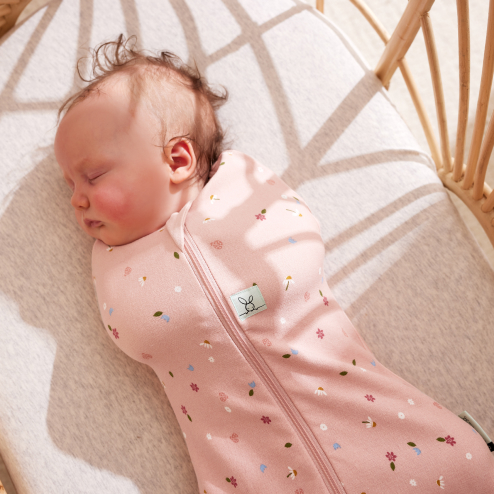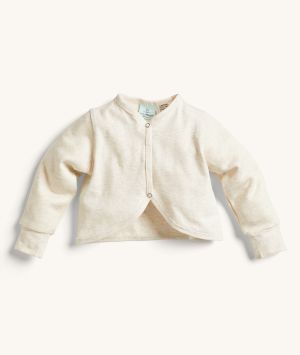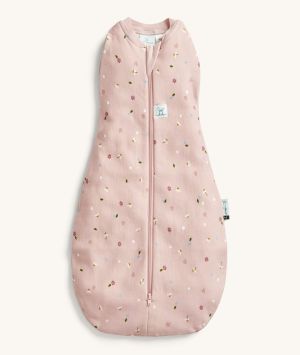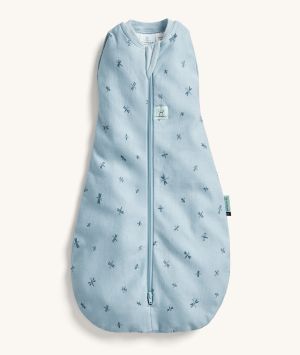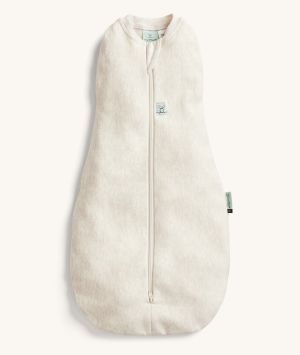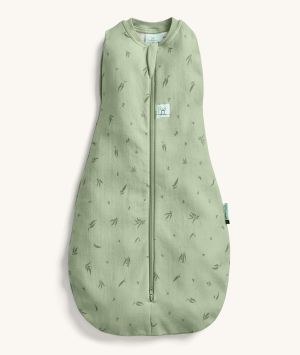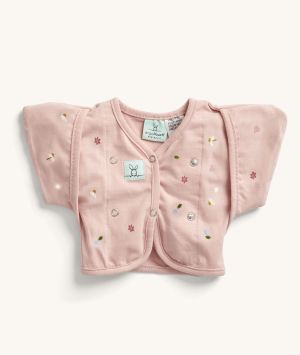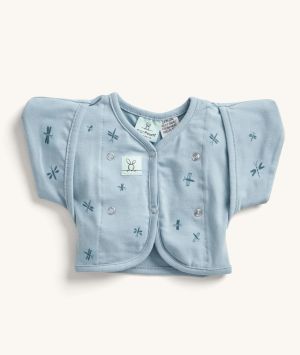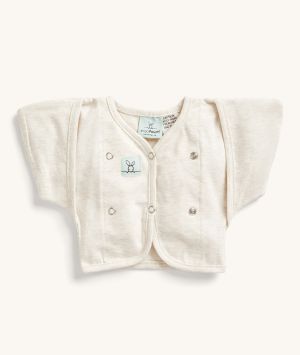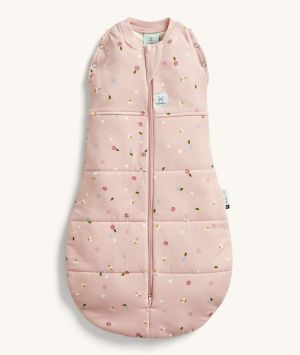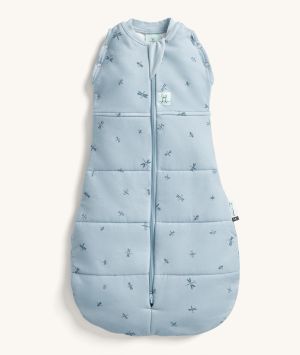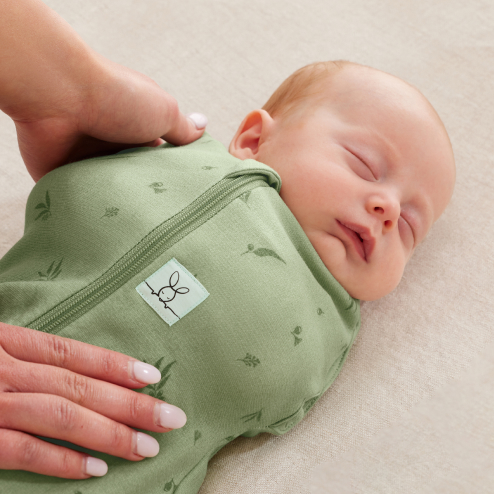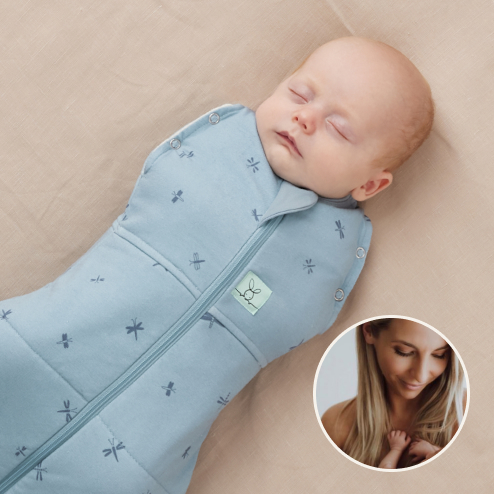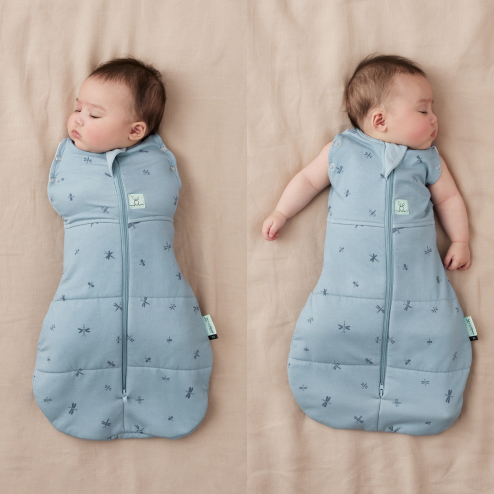Safe sleep for babies: What you need to know for safe & comfortable sleeping
18 June 2020 Newborn Sleep Infant Sleep Toddler Sleep Preschooler Sleep Product Information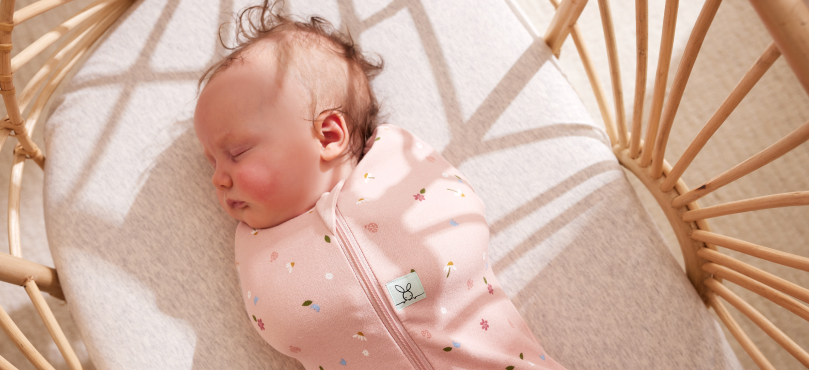
Ensuring your baby’s safety and comfort while sleeping
Sleep can be an all-consuming element in your life when you have a baby. At ergoPouch, we are obsessed with sleep, and we can empathise that it may seem overwhelming to wonder if all elements are aligned for a safe and comfortable sleep for your little one. Rest assured we have thought of everything so you don’t have to.
Here is our safe sleep for babies checklist. Read on for more information!
- Choose sleepwear with breathable fabrics for healthy skin
- Regulate their body temperature
- Look for TOG-rated sleepwear
- How to create a safe, snug and secure fit
- Choose sleepwear that promotes healthy body positioning
- More safe sleep FAQs

Choose sleepwear with breathable fabrics for and healthy skin
We know babies and children sleep better in natural fibres for the simple reason that they improve breathability and keep your little one’s body at an even temperature, resulting in a safe and comfortable sleep for your mini.
Sleepwear that is filled with synthetic fibres (such as polyester) will make your child overheat, sweat, and may frequently wake them up throughout the night. Natural fibres such as cotton are the BEST choice for sleepwear as they allow children's sensitive skin to breathe, reducing the chance of overheating and encouraging a longer sleep - hooray!
Synthetic fibres and the irritation caused by synthetic fabrics rubbing on sweaty skin can also cause an eczema flare-up. For those babes who are prone to skin irritation through eczema, chemicals or other, breathable and organic fabrics will go a long way to keeping your mini's skin smooth and soft.
All ergoPouch sleepwear is TOG rated and made from breathable, natural fibres including organic cotton and bamboo. (Learn more about our natural and sustainable sleepwear.)
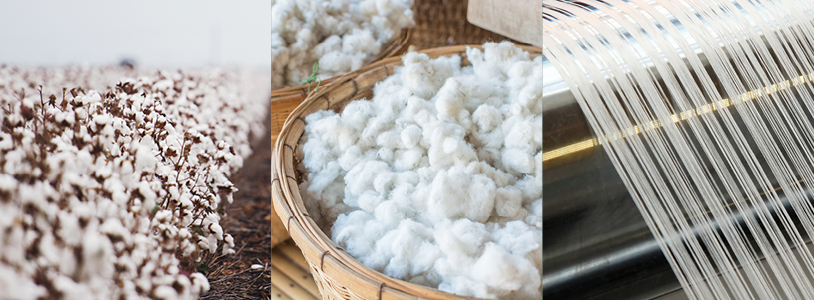
Regulate their body temperature
When it comes to safe sleep for babies, it's really important to dress your child correctly to accommodate the temperature of their room while they’re sleeping, as their little bodies are not as great at regulating temperature as our adult ones.
- Choose an appropriate layer (pyjama/onesie) to dress your child in underneath their swaddle or sleeping bag.
- Their back and tummy should feel warm, not too hot or too cold.
- A baby who’s too warm may have damp hair or be sweaty, flushed and have a fast pulse. In this case, remove a layer of clothing, and you can even try moving your baby to another room that’s a bit cooler.
Often your baby’s feet or hands will actually feel cooler than their core temperature, which is normal! As a baby is developing their circulatory system, their body is giving their vital organs priority when it comes to blood. As babies and children use their extremities to get rid of heat when they feel too hot, don't make the mistake of covering hands and feet during sleep.
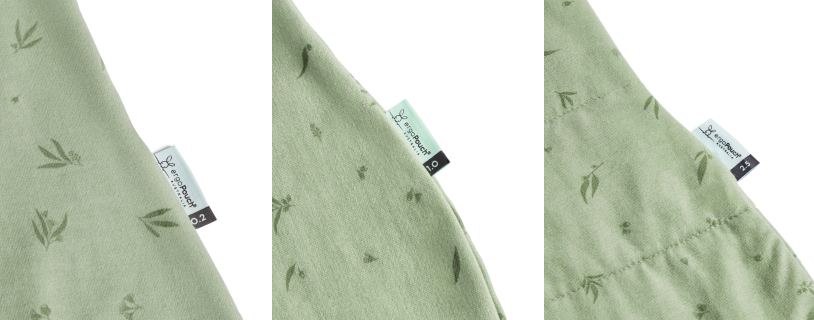
Look for TOG-rated sleepwear
TOG-rated fabrics are an important tool that helps to take the guesswork out of choosing the right sleeping garment for your baby. As your baby cannot regulate their temperature like adults can, the layers they wear to sleep are integral to their safety by ensuring they are at just the right temperature.
A TOG is a unit of measurement for insulation and warmth of sleepwear and bedding. Put simply, the lower the TOG rating, the lighter the fabric. The higher the rating, the more padded and insulated it is.
Refer to our What to Wear Temperature Guide for taking the guesswork out of dressing your little one for sleep.
How to create a safe, snug and secure fit
Your baby's sleepwear should be slim fitting on the body to avoid the danger of loose fabrics around their face. A baby who does not have the coordination or muscle tone to move a piece of fabric from their face is at an increased risk of SUIDS / SIDS.
Make sure your baby's sleepwear is fitted around the neck hole, has child-safe mechanisms (such as zips and press studs) and does not restrict their movement in a way that is dangerous (e.g. a rolling baby's arms should not be contained - learn more about the rolling milestone).
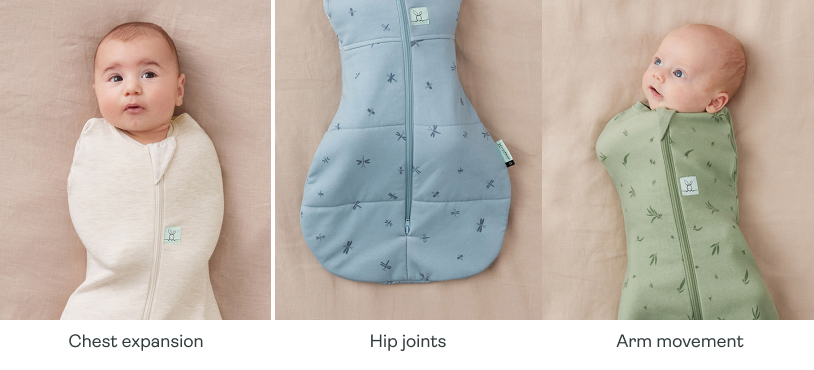
Choose sleepwear that promotes healthy body positioning
Little growing bodies need room to move and grow while they’re sleeping, both for healthy growth and joint development, but also to self soothe. There are three key areas here to consider when choosing sleepwear.
- Chest Expansion: If choosing to swaddle your baby, make sure there is enough room around the chest to allow for full chest expansion. Those small and developing ribs need enough room to expand in and out with each tiny breath. Look for swaddle fabrics that stretch in all directions across the chest, making them cosy and comfortable for your baby to sleep and breathe in. (This is how we designed our Cocoon Swaddle Bag.)
- Hip Joints: To ensure the healthy development of their joints, baby's hips and legs should always have a natural bend up and out during sleep. It is always important to allow room for the hips to move. If they are wrapped straight down and pressed together, this can increase the risk of developmental dysplasia of the hip (DDH).
Look for swaddles that have received an acknowledgement from The International Hip Dysplasia Institute for being a “hip-healthy” product, like our Cocoon Swaddle Bag, which has an ergonomic bell-shaped design provides enough room for hip mobility and allows babies to move their legs comfortably and adopt ‘frog-leg’ position. We also offer hip harness sleeping bags for babies who wear a brace to treat Developmental Dysplasia of the Hip. - Arm Movement: Whilst the idea of a swaddle is to contain the startle (moro) reflex to keep baby from waking, babies also need some arm movement to promote healthy development and shoulder joints. A swaddle shouldn't be so tight that it pins your baby's arms in one place, but allow for some natural arm movement. Look for a swaddle with stretch to allow for this.
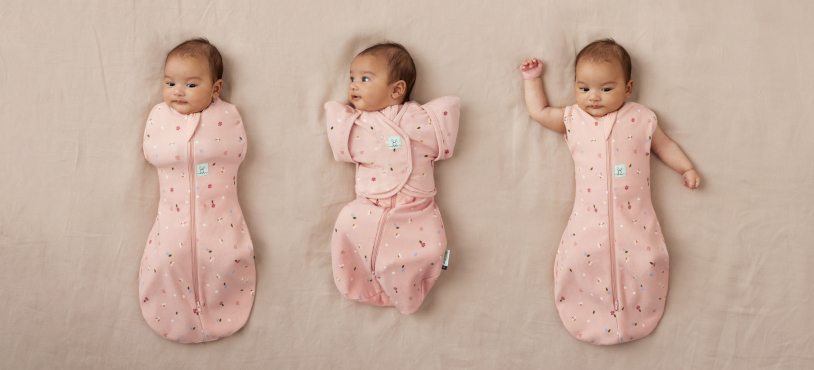
More FAQs about safe sleep
Below we answer more common questions about creating a safe sleep environment for newborns and infants.
Q: Are sleeping bags safe for rolling babies?
A: When your baby starts to show signs of rolling, they need to transition from a swaddle sleeping bag to an arms-out sleeping bag for their safety and development. A rolling baby's arms should not be contained.
Q: Is it safe for babies to sleep on their tummy?
A: Always place your baby on their back to sleep. A baby sleeping on their tummy increases their risk of Sudden Infant Death Syndrome. Remember, Tummy for play and back for sleep. If your baby can roll to their tummy, they must be sleeping with their arms out, it is safe to remain on their tummy once they reach this milestone.
Q: Is side sleeping safe for newborns?
A: No, your newborn shouldn’t sleep on their side as this could increase their risk of choking.
Q: Is it safe for babies to sleep in a carrier?
A: When used correctly, it’s safe to sleep your baby in a carrier. There are many things to consider when using a carrier. Red Nose states that a wrap sling carrier might be suitable from birth depending on babies development and advises not to use framed and structured carriers in the first 4-5 months of age. When using a carrier, follow the T.I.C.K.S approach- Tight, In view, Close enough to kiss, Keep chin off the chest, Supported back.
Q: Are baby loungers safe for sleep?
A: The safest place to sleep your baby is in a cot or bassinet on a firm fitted mattress.
Q: Are baby swings safe for sleep?
A: Sleeping your baby in a baby swing is considered unsafe. The best place to sleep a baby is in their cot or bassinet.
Q: Are bassinet safe for sleep?
A: Absolutely! Bassinets are perfect for short term use for newborns up until they start rolling. When they begin to roll, move them into a cot.
Q: Can you co sleep with a baby safely?
A: No, It’s not safe to share a bed with your baby. The safest place for your newborn to sleep is in their own bassinet/cot.
Q: Are dummies safe for sleep?
A: Yes, If a parent decides that a dummy will be used, it should be used consistently for all sleep periods or not at all. If your baby doesn’t like sleeping with the dummy, they should be weaned off.
Have more questions about sleep safety? Let us know! We’ll be happy to update this guide with more information.
Get in touch with us via our Instagram @ergoPouch for live and up to date resources.

